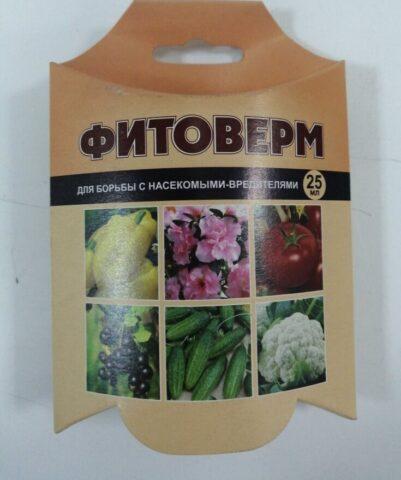Content
One of the most common problems for beginners and experienced gardeners is thrips on pepper seedlings. Every gardener knows firsthand about this pest of agricultural crops. However, few people are aware of how to effectively fight and prevent problems caused by thrips.
Description of the pest
Controlling thrips on pepper seedlings is a serious undertaking. But it is impossible without knowledge of what this type of pest looks like. You can meet thrips in almost every corner of the world. These heat-loving creatures are mainly herbivores, which is why they pose a particular danger to those who like to grow crops.
It is quite difficult to see thrips, since their body size usually does not exceed 0.3 cm. Moreover, the pest leads a secretive lifestyle and prefers not to appear again in open space.
Thrips reproduce rapidly. In a greenhouse, the number of generations of insects can increase to 15 broods per year. This rate of reproduction is explained by the relatively short life expectancy.On average, these insects live from 25 to 45 days, depending on conditions.
As a rule, thrips feed on plant sap. All types of crops can be present in their diet. However, the pest's favorite plant is pepper. These insects also carry a wide range of viruses and plant diseases. That is why the appearance of a pest on pepper leaves often coincides with a deterioration in the general condition of the crop.
Reasons for appearance
The reasons why pepper seedlings are affected by thrips are not always easy to determine at first glance. However, many of them may seem obvious to experienced gardeners. The most common reasons for the appearance of insects on the leaves of peppers and other crops include high air humidity. Such conditions are most favorable for the development of thrips larvae. Therefore, the pest is most often found in greenhouses, where it does not have to deal with critical changes in humidity and temperature.
Also, the rate of spread of infection can be affected by close planting of bushes, which promotes direct contact of a diseased plant with a healthy one.
At the seedling stage, peppers are most susceptible to diseases caused by the spread of insect pests. The appearance of thrips when preparing plants for planting is influenced by factors such as:
- use of contaminated seeds;
- incorrect approach to the growing process, agrotechnical inconsistencies;
- placing pepper seedlings next to indoor plants;

Thrips can attack not only street but also indoor crops, so not only peppers should be protected from this pest
If it is quite difficult to determine whether a seed is infected, then creating the right agrotechnical conditions is one of the necessary steps. Often, incorrectly selected soil or mixing the soil at home can lead to the appearance of thrips. Also, careless attitude to watering and temperature conditions can destroy the already tender pepper sprouts.
Before planting seedlings, it is necessary to till the soil and put the seeds through a dressing procedure. This way you can avoid the appearance of thrips in the early stages.
What do peppers look like when infected with thrips?
Getting rid of thrips that appear on pepper seedlings is not an easy task. The longer the process of diagnosing a lesion is delayed, the more difficult it is to cope with the consequences in the future. That is why it is important to be able to determine the degree of pepper disease by appearance.
In the first stages of pepper infestation by thrips, it is difficult to detect the pest. However, it is necessary to quickly take action if you notice at least one of the listed signs of insect activity.
The most noticeable signs at first glance include:
- the plant loses its original color, acquires a silvery tint;
- deformation and withering of buds, stems, leaves, ovaries;
- the appearance of silvery marks on the body of the plant and on its leaves, which indicate the death of cells;
If something was wrong at the stage of plant wilting, then the pepper is more likely to be treated.If the gardener realized it too late, when necrotic marks appeared on the body and leaves of the seedlings, it will be much more difficult to restore the crop and save the future harvest.
Bell peppers affected by thrips are also characterized by the appearance of a sticky coating on the leaves, which is caused by the release of waste products by insects.
What harm can they cause?
Thrips on peppers appeared relatively recently. Before the active import of foreign products into the country, this type of pest was only occasionally encountered by gardeners, but did not become a problem.
Nowadays, thrips are one of the most dangerous types of insects that attack peppers. In addition to the leaves and stem, these pests destroy the fruits of the crop. Thrips not only cause necrotic formations that spoil the consumer and marketable appearance, but also transmit diseases. Often, because of these insects, peppers suffer from Alternaria blight - dry rot. Plants affected by this disease are unsuitable for food and must only be disposed of.
Thrips also cause pepper leaves to become curled, the so-called cucumber mosaic. To save the crop in this case, you will have to fight not only directly with the insect, but also with a rapidly progressing disease.

Diseases carried by thrips can affect not only peppers, they also often cause nearby tomatoes to suffer.
How to treat pepper seedlings against thrips
Thrips on pepper seedlings must be treated. In the fight against the pest, various methods are used. Experienced gardeners use different types of preparations: biological and chemical.However, they are not inferior to adherents of folk methods of combating thrips, who invent new unusual ways to get rid of the pressing problem.
Chemicals
Chemicals are usually used at the stage when large crop areas need to be treated. The advantage of such pest control products is that the substance penetrates the plant and makes its body and fruit toxic to insects. The drug does not disrupt the development process of pepper and does not affect its benefits to humans, therefore its use is safe and recommended by experts.
The best chemical agents against thrips on peppers include:
- Confidor Bayer;
Confidor has high resistance to natural rinsing, which makes the product more effective
- Actellik 500 EC Syngenta;
Aktellik is designed for treating large areas, making it possible to use it on any type of terrain, including in a greenhouse
- Vertimek 018 EC Syngenta;
Vertimek is a combined action product that has a high level of damage not only to thrips, but also to ticks
- Aktara;
Aktara is especially effective against insects that hide behind the back of leaves
- Fitoverm.
You should be extremely careful with Fitoverm, because when using it, the use of other drugs is unacceptable
Each of the drugs has its own list of indications and prohibitions. Often the drug should not be used in parallel with the use of another active substance. Therefore, before starting treatment, you must carefully read the list of contraindications and recommendations.
Biological agents
Often gardeners and gardeners give preference to biological methods of controlling thrips, because...They consider them more reliable and safe. The modern market for pest control products is replete with a variety of drug options, but at the peak of popularity, the products that stand out are Agravertin and Spintor and Fitoverm.
The drugs are aimed not only at combating, but also at preventing crop diseases. They provide high-quality protection for peppers from thrips and other pests.
Folk remedies for thrips on pepper seedlings
Undoubtedly, folk methods are the most popular among gardeners fighting for environmental friendliness and safety. Not all of them are able to provide a guaranteed result, but many of them are used by more than one generation of gardeners:
- Infusion of marigolds. A 0.5 liter jar must be filled with flower buds and filled with water to the brim. Send the liquid to infuse for two days, and then strain through gauze. The finished product can be used to control thrips and other pests.
- It is necessary to treat peppers against thrips systematically, but a week break is necessary between the use of drugs.
- Dandelion infusion. Pour 50 g of roots into 1 liter of warm water and leave for three hours in a secluded place. At the end of time, apply to all plants affected by thrips.
- Garlic infusion. Grind the cloves. You need to add a teaspoon of garlic to a glass of boiling water. Leave the product to infuse for a day, then apply to the affected pepper seedlings.
- Infusion of celandine. Pour 400 g of plant leaves into 1 liter of water. Send the container with the product to infuse for a day. After the time has passed, pour the resulting preparation over the affected peppers.
Prevention measures
It is important to know not only methods of controlling thrips on pepper seedlings, but also preventive measures.If you follow them, the harvest of your favorite crop will be rich and healthy. To prevent thrips on peppers, you need to:
- maintain the optimal humidity value;
- carry out regular inspection of plants;
- carefully approach the choice of soil and seed;
- isolate crops from already infected plants;
- carry out systematic preventive treatment;
All these measures will help preserve the pepper seedlings in their original form and protect them from serious problems caused by thrips attacks.
Conclusion
Thrips on pepper seedlings are a serious problem for garden owners. Pests can greatly affect the quality and quantity of the harvest of a crop beloved by many. But if you know how to deal with thrips, then this problem will bypass pepper.














